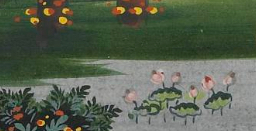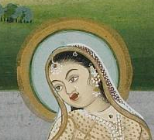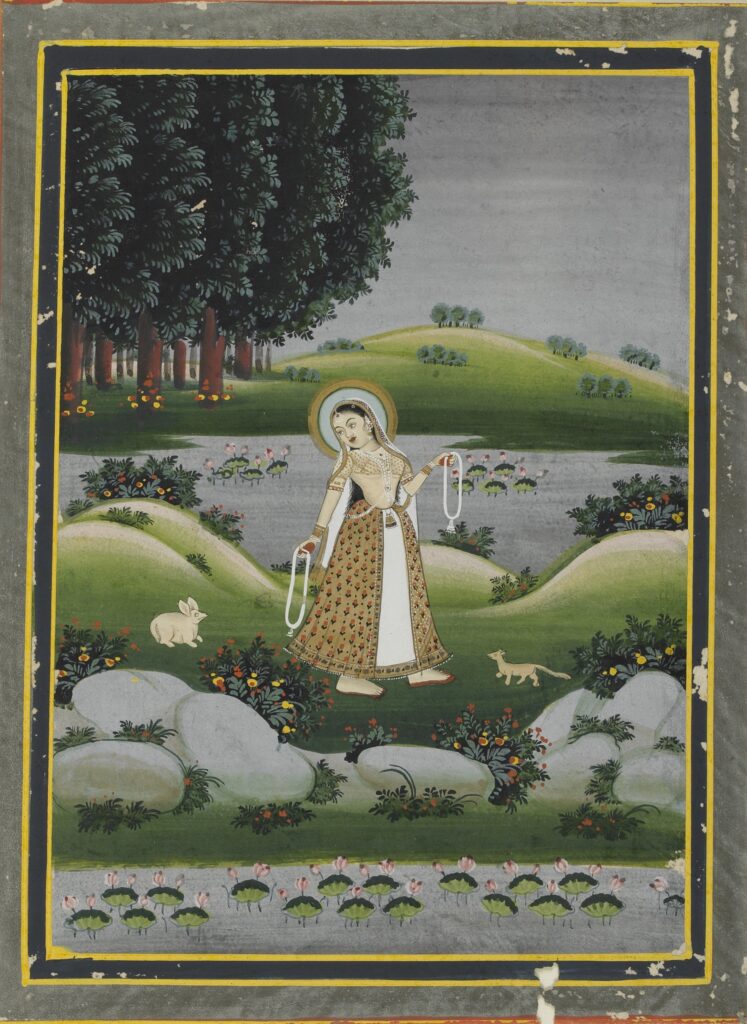Kamodhani Ragini
Kamodhani Ragini
India, Rajasthan, Jaipur, late 19th century
Opaque watercolor and gold on paper
Courtesy the Arthur M. Sackler Gallery, Smithsonian Institution, Washington, D.C.: Purchase — Smithsonian Unrestricted Trust Funds, Smithsonian Collections Acquisition Program, and Dr. Arthur M. Sackler, S1986.460
S1986.460
This ragini is meant to convey a sense of eager anticipation. The woman walks through a forest grove, awaiting her lover. Two small animals accompany her, one appears to be a hare and the other a weasel. India has several varieties of weasel and marten and is home to four varieties of hare. Both animals are native to India but are rarely depicted in artwork. In South Asian literary traditions, rabbits are often presented as selfless and virtuous whereas weasels are cunning. It is possible, therefore, that these creatures embody the heroine’s hopes and fears? Will her lover be like the reliable hare and meet her in the woods or will he prove to be an unreliable opportunist? She turns to gaze at the rabbit, a possible indication of her trusting optimism.

The lotus begins its life rooted in muddy and dirty water, but blooms into an extraordinary and pristine flower. For this reason, it has become a symbol of purity and enlightenment. Images of deities are often placed on lotuses because no other surface is considered appropriately pure enough to bear them.
The colors in this painting are exceptionally vibrant. The golden border, halo, and details speak to the refined nature of the patrons. Perhaps more intriguing than the vibrancy of color and golden details is the impressive paintwork. The artist includes tiny ornamental elements and elegant details that add character to the naturalistic landscape that stretches back into the distance.

Halos have a long history in Indian art and they indicate a divinity, a figure of great spiritual power or a powerful king. It is unusual for the heroine of a raga to have one. This may suggest that she is more than human.
